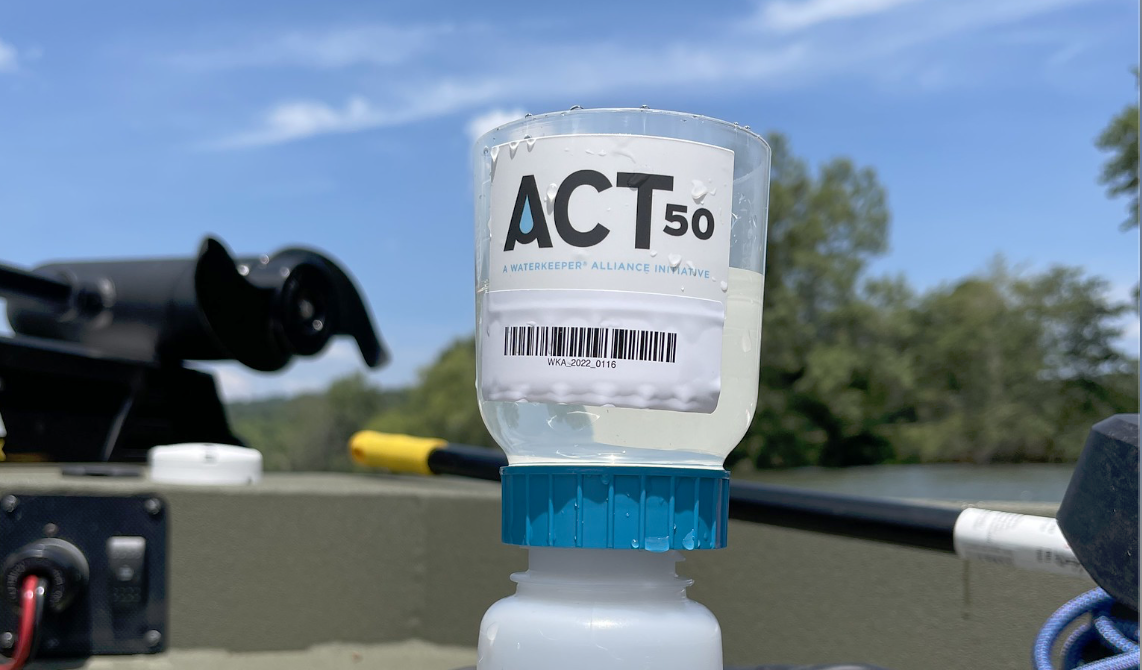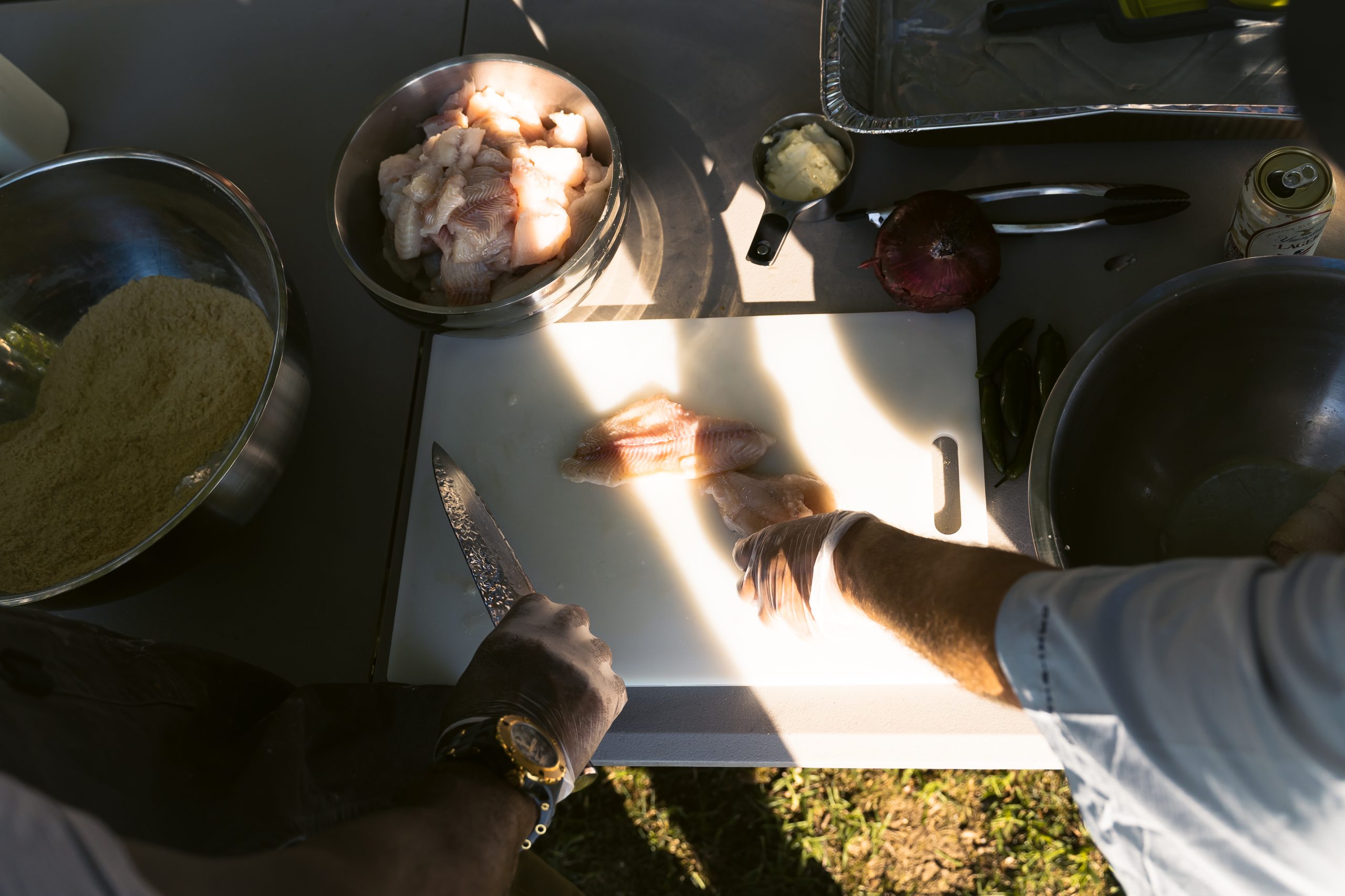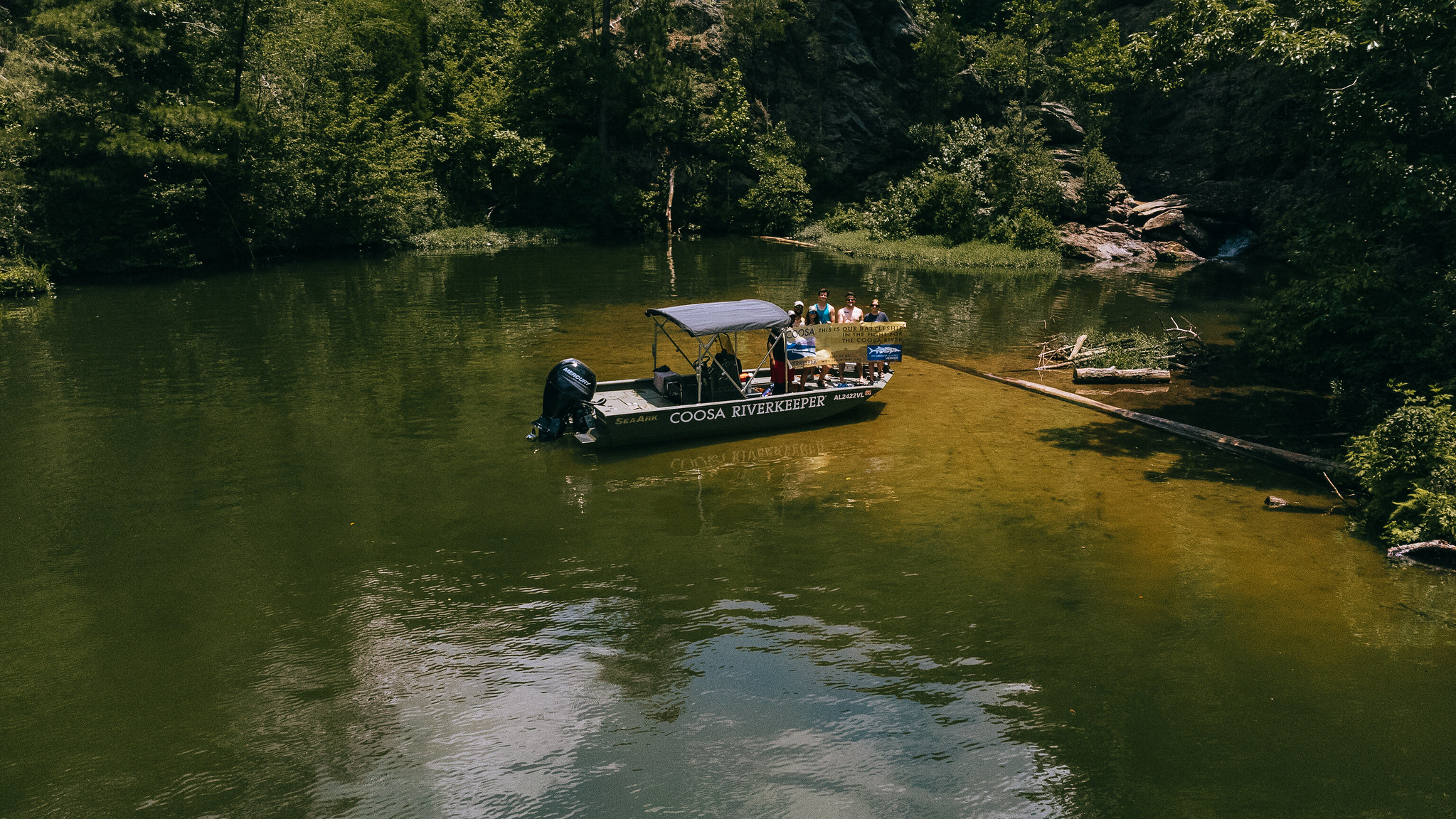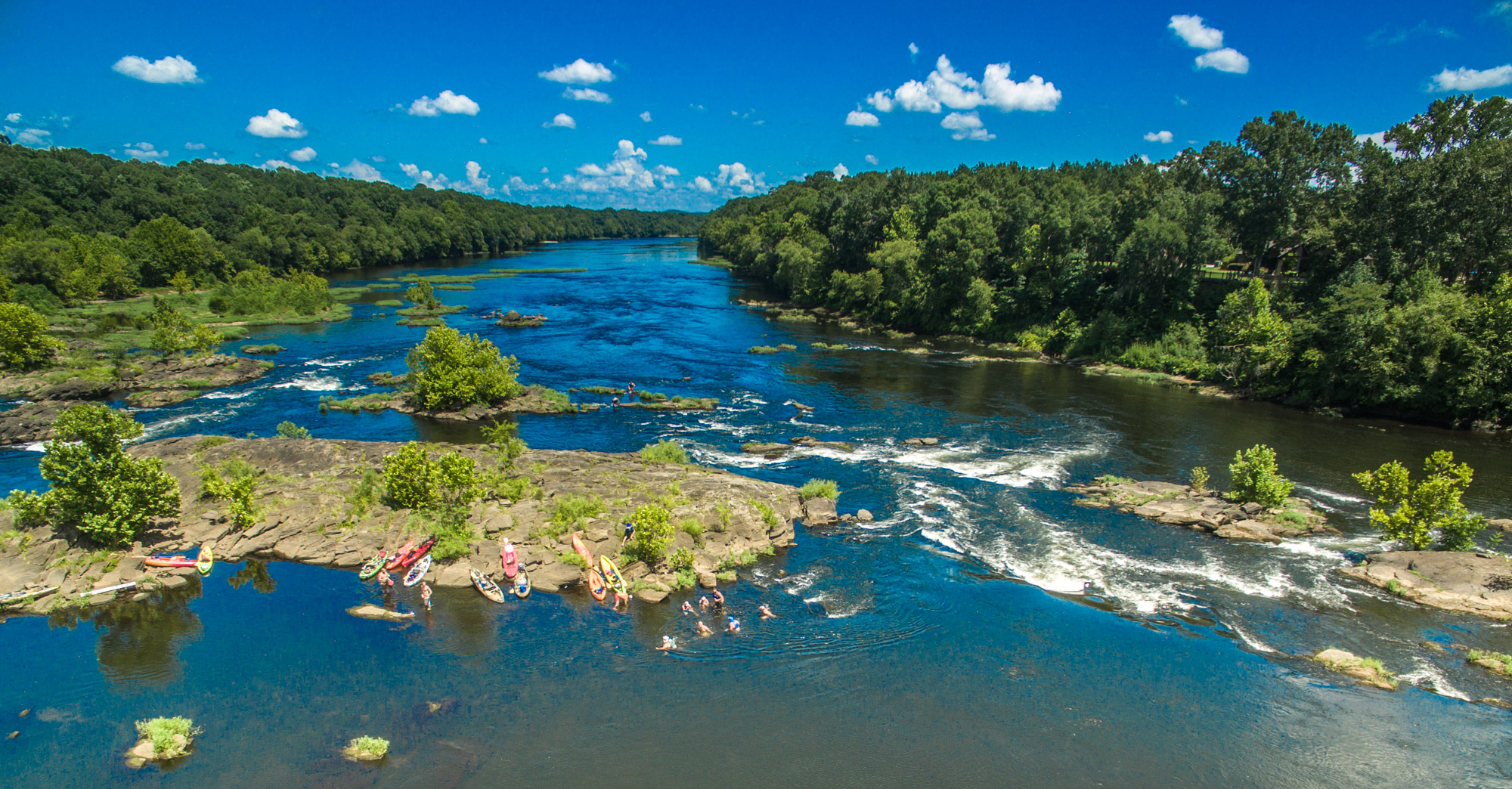Crappie
Bass
Catfish
Bream
White Crappie

(Pomoxis annularis)
White crappie are a bit more tolerant of muddy water than black crappie. The state record is 4 lbs 9 oz. You’ll often hear fishermen refer to good size crappie as “slabs.” Weiss Lake on the Coosa River is known as the Crappie Capital of the World, but you’ll catch crappie in any of the Coosa’s lakes. The most popular method of catching crappie is using live minnows. Finding a school of crappie is so fun, you likely won’t care if they’re white or black crappie, but knowing the difference makes you a smarter angler!Distinguishing Features
A few features distinguish the white crappie:
- Adult size is 12-20 inches.
- Coloring is a light gray to greeen back with silver sides and a white belly.
- Up to 10 dark vertical bars along its sides. Sometimes though, they are faint.
- Dorsal fin with five or six spines, a key difference from black crappie (which have seven or eight spines).
Habitat
You can find white crappie in large reservoirs, rivers & lakes. White crappie are more tolerant of turbid (murky) waters than black crappie. They like to hang out around aquatic vegetation, submerged logs, and other underwater structures.
Diet
Young crappie feed on invertebrates such as zooplankton and insects. When they reach a size of about 7 inches, fish become more prevalent in the diet.
Spawn
White crappie will begin spawning in April, or when water temperatures reach about 56-59 degrees F, and continues into early June. Crappie congregate into large schools for spawning season.
Advisories
Weiss Lake: Limit consumption of white crappie to 1 meal/week due to PCBs.
Choccolocco Creek: It is advised to NOT eat any fish caught from Choccolocco Creek due to PCBs.

(Pomoxis annularis)
White crappie (Pomoxis annularis) are a bit more tolerant of muddy water than black crappie. You’ll often hear anglers refer to good size crappie as “slabs.” Weiss Lake is known as “the Crappie Capital of the World,” but you’ll catch crappie on any of the Coosa’s lakes. Finding a school of crappie is so fun, you likely won’t care if they’re white or black crappie, but knowing the difference makes you a smarter angler! The state record white crappie was 4 lbs 9 oz, caught on 5/8/2000 at Lake Martin.
The Black Crappie

(Pomoxis nigromaculatus)
Black crappie (Pomoxis nigromaculatus) along with white crappie are a popular gamefish because of their great taste. They stay in groups so once you catch one, you’re likely to catch several more in the same spot. They largely act the same and grow to similar sizes, so the difference is largely in appearance. The state record black crappie was 4 lbs 5 oz caught twice, once at the Jefferson Co Pond on 6/2/1997 and again on 3/27/2007 at the Fort Payne Reservior.
The Black Crappie
Distinguishing Features
A few features distinguish black crappie:
- Adult size of 12-18 inches.
- Coloring is darker than the white crappie with black spots on its side (as opposed to vertical bars on white crappie).
- Dorsal fin has seven or eight spines, a key difference from white crappie (which have five or six spines).
Habitat
You can find black crappie in large reservoirs, rivers & lakes. Black crappie prefer clearer, cleaner waters than white crappie.
Diet
Young crappie feed on invertebrates such as zooplankton and insects. When they reach a size of about 7 inches, fish become more prevalent in the diet.
Spawn
Advisories
Weiss Lake: Limit consumption of white crappie to 1 meal/week due to PCBs.
Choccolocco Creek: It is advised to NOT eat any fish caught from Choccolocco Creek due to PCBs.






